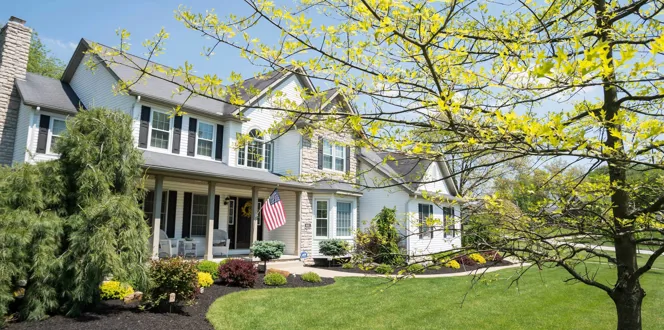Fungi are like silent assassins.
They can strike your trees without warning and slowly rot and deteriorate the woody part of the tree. The leaves might yellow and wilt. You might notice dead branches. And before you know it, your tree has seen better days.
One particular problem called basal stem rot caused by the species of Ganoderma is one of the most devastating diseases. This ganoderma fungi attack a variety of deciduous trees, such as maples, oaks, and honey locusts, as well as ashes, elms, and some conifers as well as palms.
This one is unique because it leaves a sign early on that it's beginning its attack on your tree.
Let’s learn what symptoms to look for so you can quickly tell if any of your trees are suffering from ganoderma root rot.
What is Ganoderma?
When you hear a name like Ganoderma, you probably wonder not only how to properly pronounce it, but also what it even is.
Ganoderma is a fungus that causes a wood-decaying infection that occurs through tree wounds. It attacks large roots and the base of the trunk but can extend up the trunk a few feet as well.
What causes it? It is caused by fungi in the Ganoderma genus. The fungus spreads through airborne spores or unsanitized landscape tools.
Ganoderma Symptoms & Signs
If you are concerned that your tree is infected, there are a few Ganoderma symptoms you can look for:
- Yellowing leaves
- Wilting leaves
- Undersized leaves
- Dead branches
But the most telling sign of infection is often the formation of fruiting bodies that look like small shelves or mushrooms on the lower portion of the trunk. These are called conks (a conk is a mushroom without a stalk).
Will ganoderma kill trees? They ultimately weaken the tree, impacting its structural integrity. This means if strong storms or winds come through, they could uproot your tree.
Common Trees Susceptible to Ganoderma
There are many deciduous trees and some conifers that are susceptible to Ganoderma. Following are the most common forms of Ganoderma and the species they impact:
- Ganoderma applanatum - This fungus impacts apple, beech, birch, cherry, elm, sweetgum, horse chestnut, locust, maple, oak, poplar, spruce, hemlock, sycamore, and willow. It forms those shelf-like conks on the wood near the soil that are brown or reddish-brown on top with creamy or white margins. The tops appear dry.
- Ganoderma sessile (formerly Ganoderma lucidum) - This fungus forms the distinctive shelf-like structures on the wood with brown to reddish-brown tops with cream-colored margins. The tops are shiny, almost like they have been varnished. Trees susceptible to this one include apple, ash, European beech, birch, cherry, elm, sweetgum, hickory, locust, maple, oak, redbud, sassafras, and willow.
- Ganoderma zonatum degrades the low 4 to 5 feet of palm trunks. This is considered a lethal disease of palms, and the fungus that causes it is present throughout Florida, as well as in some parts of Georgia and South Carolina. Conks begin as soft, white masses that are somewhat flat. As they mature, they begin to protrude from the trunk, forming small shelves.
Ganoderma Control & Treatment
When Ganoderma gets inside your tree, trouble usually follows.
This means that concerning Ganoderma root rot treatment, there is, unfortunately, no effective way to stop it.
Once the conk appears on the bark, the tree has been infected for some time . It is particularly important to note , that if the tree has conks on several limbs, on the trunk, or on exposed roots, there is a chance of the tree falling and causing property damage. An arborist assessment of your tree for safety is recommended in this case.
Will Ganoderma Kill Trees?
Once Ganoderma sets in, your tree’s heartwood will continue to decay. There are no control products that can help manage this type of disease.
This fungus can move fast; you could lose your tree in as little as three years, but usually the infection persists for 5 years or longer.
The best way for Ganoderma managementis to prevent it. , Proper watering (not too much), using mulch and applying soil care products can keep your tree healthy. Also, avoid damage to tree trunks and roots that can open the tree up to Ganoderma infection.







